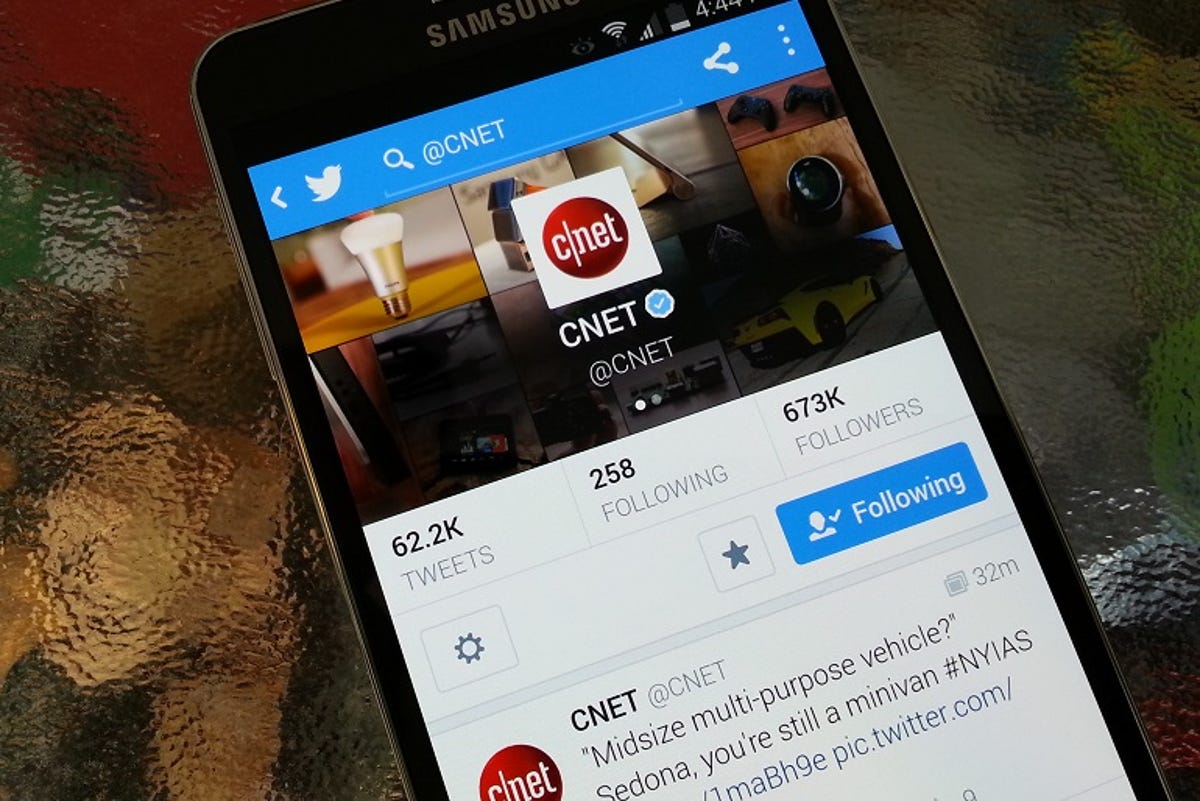
Photo by Nicole Cozma/CNET
Hopefully you’re in full spring cleaning mode, because it’s time to do a bit of optimization — and possibly deletion — on your social-media accounts. We’ll start with making sure you have a recent password on your account, then unlink some unnecessary apps, and finally cut the cord on services you’re no longer using.
Change your password
Even if your account has never been accessed by a third-party without your permission, your current password may still be compromised. Basically, it’s time to change your password that you’ve been using for the last three years. Facebook and Google+ will even show you how long it has been since you updated it. Let’s get started:
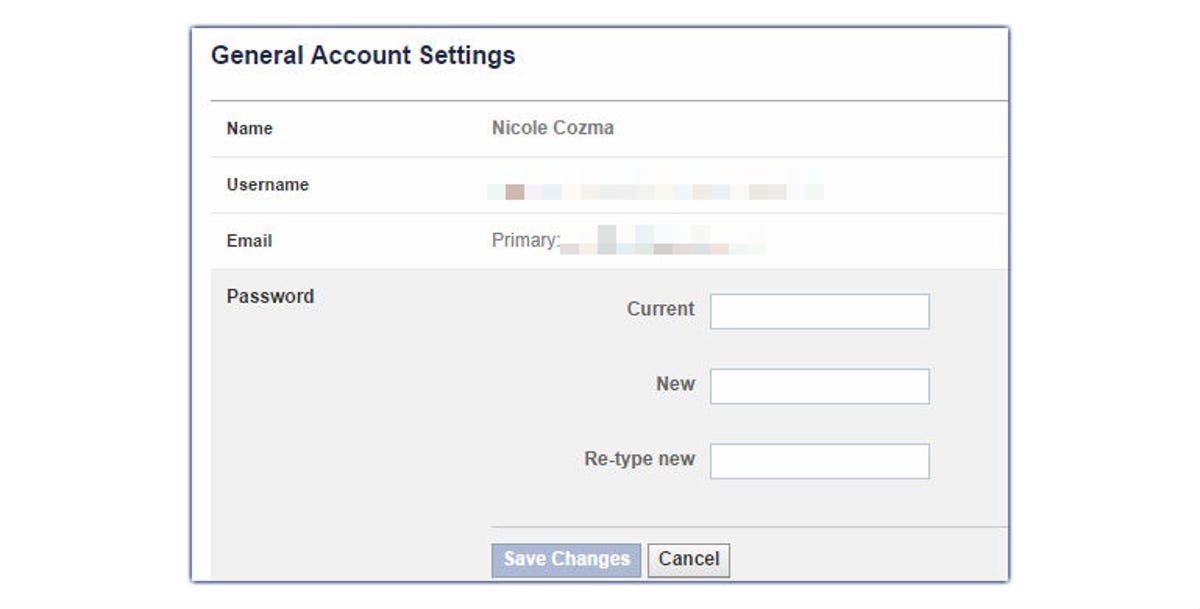

Screenshot by Nicole Cozma/CNET
In the top right-hand corner, click on the small arrow-shaped icon and select Settings. In the new area that loads, you’ll see Password, followed by how long it has been since you changed yours. Click there and you’ll be able to provide a new password.
Google+


Screenshot by Nicole Cozma/CNET
Your profile image in the top right-hand corner is actually where you’ll find the menu you need to access the account dashboard. Once you click it, select Account, then scroll down and you’ll see the Password label. Click it and you’ll be prompted to enter your current password before you’re able to choose a new one.


Screenshot by Nicole Cozma/CNET
Click on the Settings cog in the top right-hand corner. Head to Settings > Password. You’ll need to provide your current password, and then type your new password twice. Don’t forget to click Save changes.
Now that you’ve changed all of your passwords, set a reminder to change them again in six months to one year — depending on your preferences. This can be done with your calendar of choice, or an app that helps you get stuff done. Of course, if there’s a security issue at any of these companies in the future, you may need to change your password before then.
Unlink apps you’re not using
While many apps are now offering the ability to log in with an existing social media account, that doesn’t mean it should stay connected to it forever. For instance, if you tried out an app that you didn’t like, but logged in with one of your accounts, it’s probably time to remove its access to your information. Here’s how:


Screenshot by Nicole Cozma/CNET
Head to the Settings area and select Apps on the left-hand side of the page. A list of all apps with access to your Facebook account will appear. If you see any that you are no longer using, click the X to the right of the app. A pop-up will appear, asking if you’re sure that you want to remove it, and also gives you the option to remove activity on Facebook associated with that particular app.
Google+
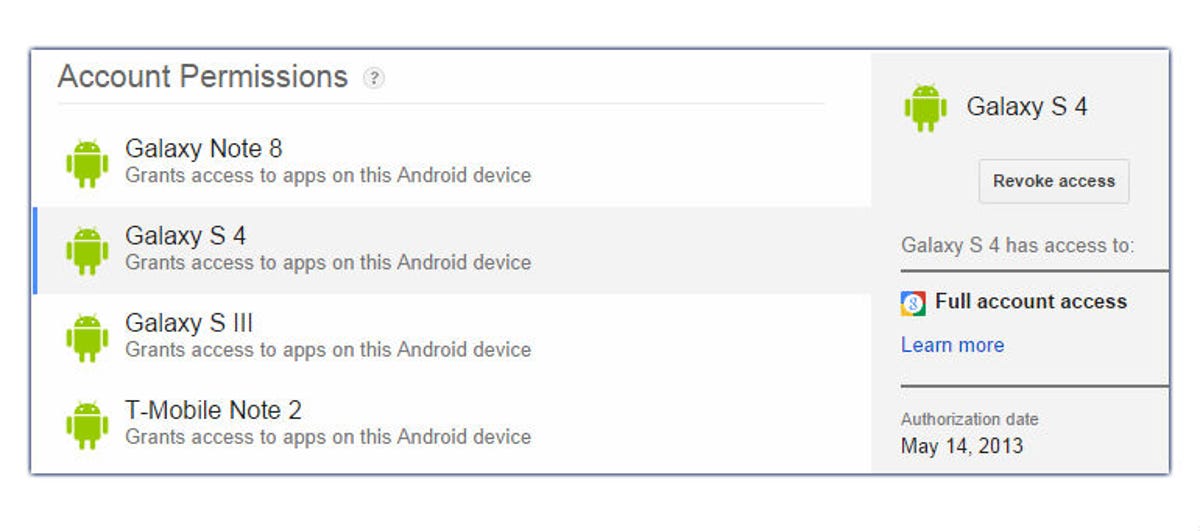

Screenshot by Nicole Cozma/CNET
On the account dashboard, scroll down to connected apps and services, and then click to remove the devices you no longer want attached to your account. To revoke access, click the device/Web site to highlight it, and then click the Revoke access button on the right.
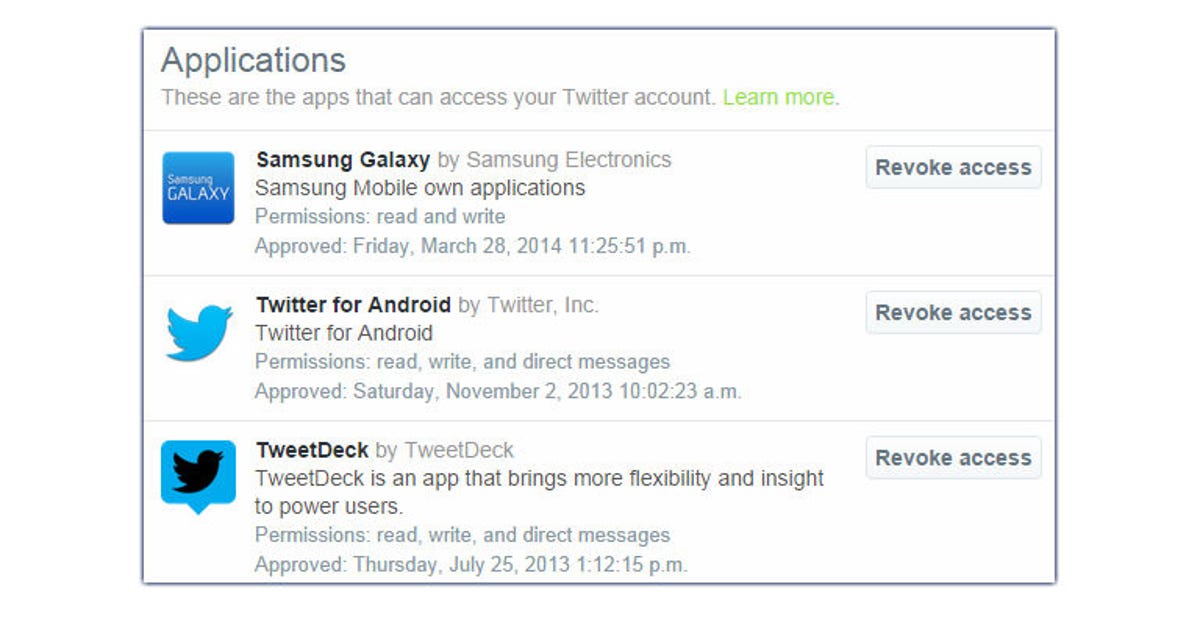

Screenshot by Nicole Cozma/CNET
Open the Settings menu and then click Apps in the left-hand menu. All apps with access to your account will load. To remove access for any of them, simply click the Revoke button by their name. If you click one by mistake and you have not navigated away from the page, you can click Undo Revoke to restore access.
Close abandoned accounts
After countless privacy setting changes, or complete disinterest in what a specific social network has to offer, it’s likely that you’re no longer logging in. If you think that you’ll never return to Facebook, Google+, or Twitter, then there’s no reason to keep your account active. Here’s how to cut the cord with all three:


Screenshot by Nicole Cozma/CNET
Before deleting your account, you may want to consider clearing out some of the information you’ve shared and backing up photos or videos. Visit this link for how to delete your Facebook search history. To backup your data, visit the General tab of the Settings area and then click the Download a copy of your Facebook data link.
Ready to delete? You’ll actually need to visit this link. The delete account option is not available through the Settings menus.
Google+
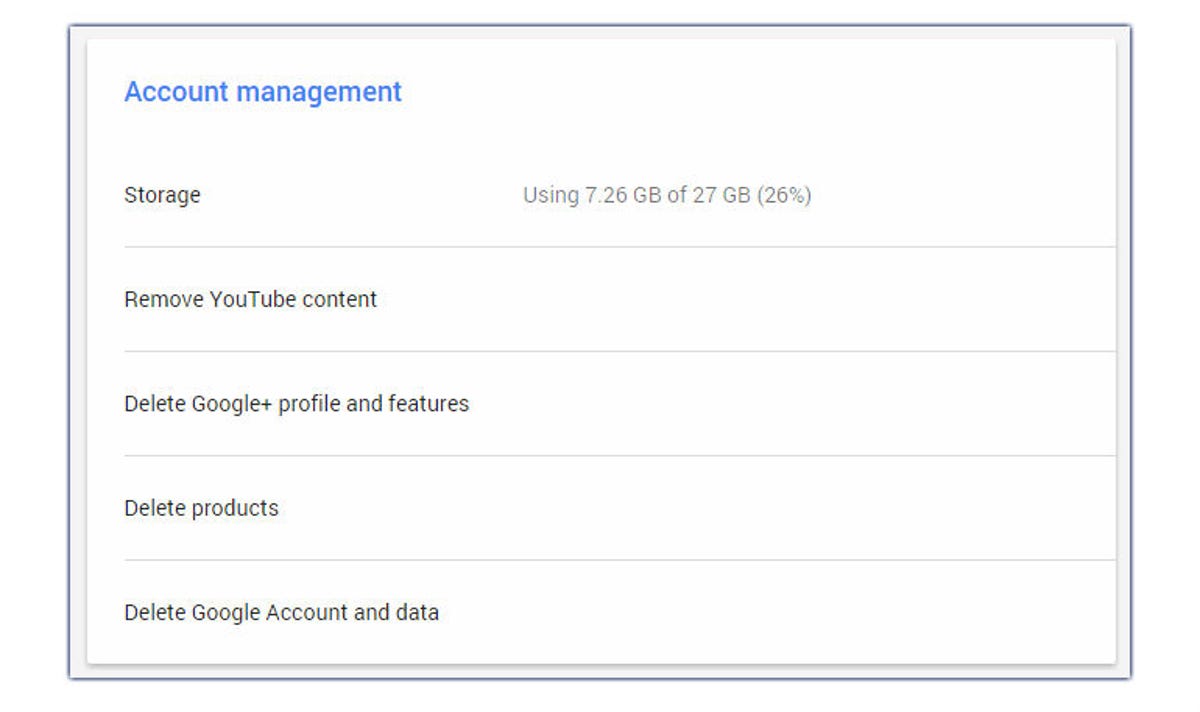

Screenshot by Nicole Cozma/CNET
Data backup and deletion is easy with Google+. On the account dashboard, scroll down to Account tools, where you’ll find the option to download your data. Farther down the menu, you’ll run into the options for removing your YouTube content, Google+ profile, or your entire account.


Screenshot by Nicole Cozma/CNET
Under the Account option in Settings, you can download all of your tweets by clicking the request your archive button. Essentially, Twitter will e-mail you a link to download your archive, and it may take a while to review the e-mail itself. Once you’ve downloaded your archive, you can click the link at the bottom of the page labeled Deactivate my account. According to the Twitter Support documentation, this is synonymous with deleting your account. They do stress that much of your data will still be present on search engine results if it was posted publicly.
Do you have any tips for optimizing your social media accounts? Share them in the comments.
Editors’ note, April 7, 2015: This How To post was originally published on April 17, 2014, and has been updated to include new information.




